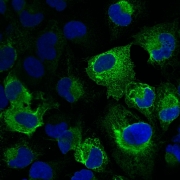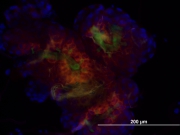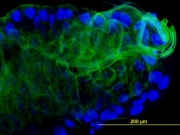Laboratoř spektroskopie jednotlivých molekul
Right now we are looking for motivated students of all levels (Bc, Mgr, PhD)!
Contact information
Tato e-mailová adresa je chráněna před spamboty. Pro její zobrazení musíte mít povolen Javascript.
Tato e-mailová adresa je chráněna před spamboty. Pro její zobrazení musíte mít povolen Javascript. Tato e-mailová adresa je chráněna před spamboty. Pro její zobrazení musíte mít povolen Javascript.
Address:
Building C (room 01037)
Faculty of Science
University of South Bohemia in České Budějovice
Branišovská 1760
370 05 České Budějovice
Phone: 00420387776237
GPS: 48.9772847N, 14.4451364E
Research Interests |
|
Allosteric communication in membrane protein complexes linked to conformational transitions on multiple timescales |
|
|
- Development of novel mechanistic models of molecular machines behind protein translocation |
|
|
Motivation: Allosterically modulated molecular machines mediate many of the key processes in all forms of life. The Sec translocon, a membrane bound protein complex, is the principal route for the efficient transport of heterogeneous polypeptides across or into lipid bilayers. The bacterial translocon consists of two main parts, a cytosolic ATPase SecA and membrane channel SecYEG. Based on our group’s recent findings we propose that the Sec translocon is a novel type of stochastically coupled hybrid molecular machine, where the processive SecA steers the energy landscape of a stochastic SecYEG channel allosterically dependent on nucleotide state. We present a number of research projects to map the full allosteric network regulating different stages of protein translocation in the Sec complex using a combination of mutagenesis, single-molecule and in silico methods. |
|
 |
|
|
Publications: • Allen, W. J., et al (2016) Two-way communication between SecY and SecA suggests a Brownian ratchet mechanism for protein translocation, Elife. 5. |
|
|
|
|
Studies of G protein signaling at the single molecule level |
|
| - Getting insights into non-canonical G protein signaling and development of signaling activity sensors | |
|
Motivation: The G protein signaling cascade is a major pathway responsible for cellular communication with the external environment. It is present in all eukaryotes from yeast to humans. G proteins transduce signals from a variety of chemical and physical stimuli including hormones, odorants, neurotransmitters, and light. Up to 50% of all modern prescription drugs target this signaling cascade. However, many aspects of G protein signaling remain unclear. Our goal is to gain insights into non-conventional properties of G protein signaling in mammalian and fungal cells. Particularly, we are interested in precoupling between G proteins and G protein-coupled receptors (GPCRs), dimerization and heteromerization of GPCSs, and development of signaling activity sensors (1-5). In our research we use advanced imaging techniques, including single-molecule imaging, combined with molecular biology, cell biology methods and advanced data processing. We strive to utilize cutting-edge techniques and multidisciplinary approaches to do excellent science. |
|
|
Figure 1. Outstanding questions in G protein signaling research |
|
|
Figure 2. A snapshot of real time dual channel single-molecule imaging of interactions between G proteins and G protein-coupled receptors in a live cell |
|
|
Publications:
|
|
Lab Members |
|
| Researchers: Tomáš Fessl, Ph.D. Dr Łukasz Bujak Radek Litvín, Ph.D. Prof. František Vácha, Ph.D. Students: Eva Sýkorová Jiří Štangl Jakub Strejc |
|
Číst dál …Laboratoř spektroskopie jednotlivých molekul
- Přečteno: 11229





